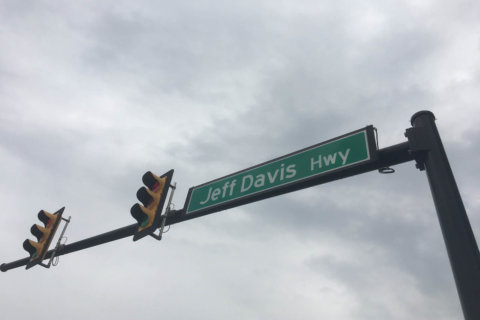
Fairfax County’s Park Authority Board renamed Robert E. Lee RECenter and J.E.B. Stuart Park this winter, in little-noticed votes that removed the Confederate leaders’ names from the facilities.
According to board meeting minutes, the body voted 9-1-1 Jan. 9, with one member absent, to follow the school board’s lead to rename J.E.B. Stuart Park as Justice Park. In a 2017 vote, the school system changed the name of the neighboring high school to Justice High School after a lengthy public debate.
On Jan. 23, apparently with less controversy, the Park Authority Board voted unanimously (with two members absent) to rename the Robert E. Lee RECenter as the Lee District RECenter.
The Park Authority website already reflects the change.
The Lee District, a political subdivision of Fairfax County, may have been named for the Confederate general, Fitzhugh Lee who was a Confederate officer, or other members of the Lee family closely associated with Virginia and Fairfax County.
Similarly, other park names on a list compiled by the authority starting in November that could be linked to the Civil War have unclear origins.
The review put the Lee RECenter at the top of the list for renaming since its origins were clear.
Other places with clear confederate links include Oak Marr Park, which is named partially for the Oakton area and partially to honor the first Confederate casualty of the war John Quincy Marr, and Stringfellow Park off Stringfellow Road, which is named after Confederate officer and spy Benjamin Franklin Stringfellow.
The list also identified facilities named for Union supporters during the Civil War, such as Munson Hill Park and Lincolnia Park, so that board members could have a full accounting of the naming situation.
The name change of Robert E. Lee RECenter was first noted by the blog “Covering the Corridor.”
Monuments an issue too
Also at the Jan. 23 meeting, the board voted not to install two separate Ox Hill Battlefield monuments to Union and Confederate soldiers that were made as part of the county’s committee meant to mark 150 years since the Civil War.
The installation was put on hold after the shooting at a black church in Charleston, South Carolina, and the 2017 death of Heather Heyer during a clash between groups of protesters at a white nationalist rally in Charlottesville.
In place of the stone memorials, the park authority has endorsed something different that would focus on healing and unification.
The Confederate side called the September 1862 fight the Battle of Ox Hill, while the Union called it the Battle of Chantilly.








